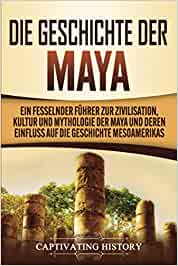Travel Guide Chichen Itza
History | Arquitecture | Insider Tipps
Chichen Itza: Travel Guide into the Mayan World
It is a once in a lifetime opportunity to see the famous Mayan ruins of Chichen Itza. For many visitors, the culture of ancient Mexico has so much fascination that they decide to travel to Mexico just because they want to see Mayan ruins. Hardly any other population has understood how to combine mathematical and astronomical elements in such a phenomical way in its constructions. Even in modern days, it is difficult to understand how they have carried out their highly complex calculations and implemented them in impressive buildings.
Chichen Itza Travel Guides and Excursions
In the Mayan language, Chichen Itza means “of the mouth of the Itza”. The name comes from the water hole, the so-called “holy cenote” (Cenote Sagrado), just near the Kukulkan Temple. Chichen Itza was founded as early as the 6th century AD and it flourished between 600 and 1200 AD. However, the most important building of the archaeological site, the famous pyramid of the Mayan god Kukulkan, was completed only around 1200. UNESCO declared Chichen Itza a UNESCO World Heritage Site in 1988 and since 2007 it has been one of the seven new wonders of the world.
-

Private Cozumel Jeep Tour
$110.00 (from) -

Cozumel Highlights
$150.00 (from) -

Tacos & Bar Hopping Tour Cozumel
$100.00 (from) -
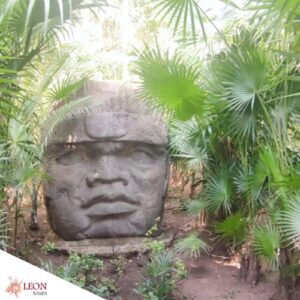
Animal Sanctuary & Island Tour
$120.00 -

ATV & Beach Break Tour
$130.00 (from) -

Private Excursion Chichen Itza
$190.00 (from) -
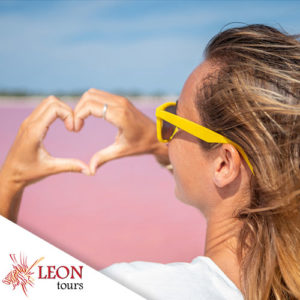
Ek Balam & Rio Lagartos
$220.00 (from) -
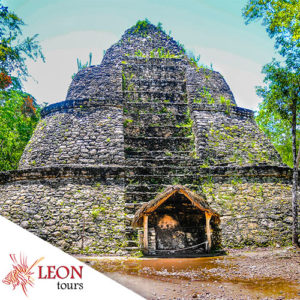
Excursion Coba, Tulum, Cenote
$190.00 (from)
This might also be of interest:
Chichen Itza – the majestic ruins of the Mayan civilisation

Temple of Kukulkan: Excursions to Chichen Itza
Just after the entrance to the Mayan ruins of Chichen Itza rises the Temple of Kukulkan, also called El Castillo in Spanish. Mysteriously it tells of long-forgotten Mayan knowledge; shows elements of mathematics, astronomy, geometry and acoustics. In perfect symmetry, the most important building of the archaeological site of Chichen Itza represents a Mayan calendar, the Haab. That’s what the Maya solar calendar is called. A Haab year consists of 18 months with 20 days and one month with 5 days. Just like in our Gregorian calendar, this results in a 365-day year. On each of the four sides of the Kukulkan pyramid, 91 steps lead upwards. 364 steps plus the final block, containing a temple, represents the number of days in a year. Interestingly, there are 4 figures on top, they are remaining of originally 20. Twenty is the number of days in a Mayan month. On each side were 5 figures to see, but unfortunately, they are no longer preserved. Five is also an important number in Mayan mathematics. The Maya counted with hands and feet in twenties, 5 fingers per hand, 5 toes per foot. Thus, the months in the Mayan calendars have 20 days.
Chichen Itza Travel Guides and Excursions
On each of the four sides of the Kukulkan pyramid, 91 steps lead upwards. 364 steps plus the final block, containing a temple, represents the number of days in a year. Interestingly, there are 4 figures on top, they are remaining of originally 20. Twenty is the number of days in a Mayan month. On each side were 5 figures to see, but unfortunately, they are no longer preserved. Five is also an important number in Mayan mathematics. The Maya counted with hands and feet in twenties, 5 fingers per hand, 5 toes per foot. Thus, the months in the Mayan calendars have 20 days.
This might also be of interest:
Kukulkan, god of the feathered serpent
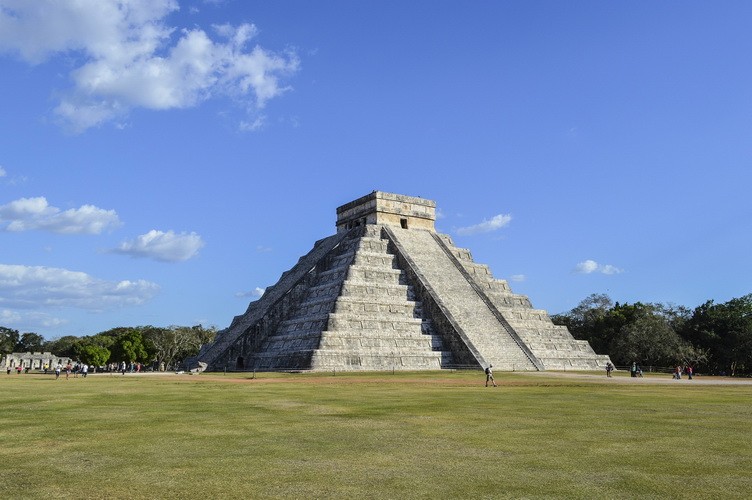
In the Cosmo vision of the Maya – their view of the world – the earth is by no means a globe or disk. The Maya believed in a flat square with four cardinal points. Above them, the sky Ka’an, and below them, the underworld Xibalba. Often, this world view is revealed in the Mayan Tree of Life, with its 13 heavens and nine underworlds. Some elements of this tree of life are built into the temple of Kukulkan. The box on the top of the pyramid represents our earth as a quadrangle. This component is found in many Mayan constructions. Nine platforms to reach the earth square represent the nine underworlds in the Mayan underworld Xibalba.
Kukulkan – God of the feathered serpent
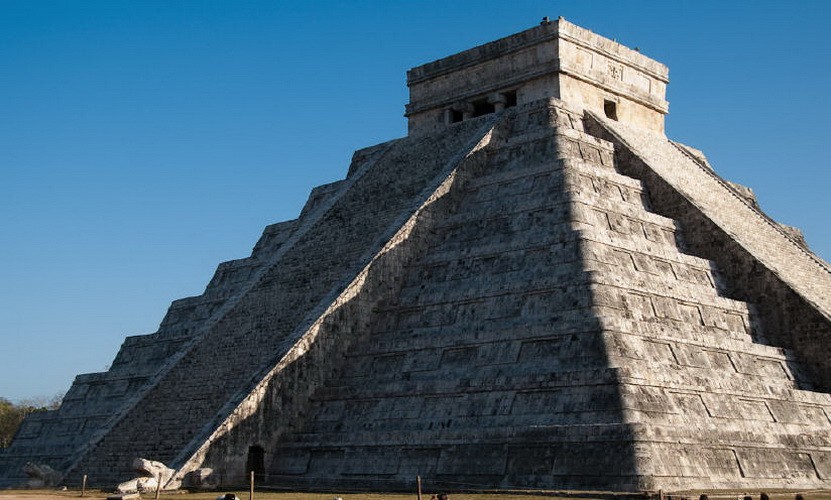
Descending of the god of the feathered serpent Kukulkan in Chichen Itza, Source
Kukulkan is one of the most important deities in the Mayan religion and means something like “feathered serpent”. Since the indigenous peoples in Mesoamerica have influenced each other, similar gods can be found there. For example, the Aztecs know the god of the feathered serpent under the name Quetzalcoatl. On the left side of the pyramid you can see two serpent heads at the level of the lower stones. They belong to a phenomenon that was discovered only in the eighties. The pyramid of Kukulkan is so brilliantly calibrated, that when day and night have the same length, an impressive spectacle takes place. Every year around March 21 and September 22, the god Kukulkan descends the steps of the temple in a play of light and shadow. Because at sunset, the shadows form the body of a snake crawling down the stairs. The spectacle is so impressive that it is now copied with light effects at night. There are theories that the goal of the god is the holy cenote, which is about 300 meters straight ahead. There numerous human sacrifices were found, which were probably mainly given to honor the rain god Chaac.
Chichen Itza – small but beautiful
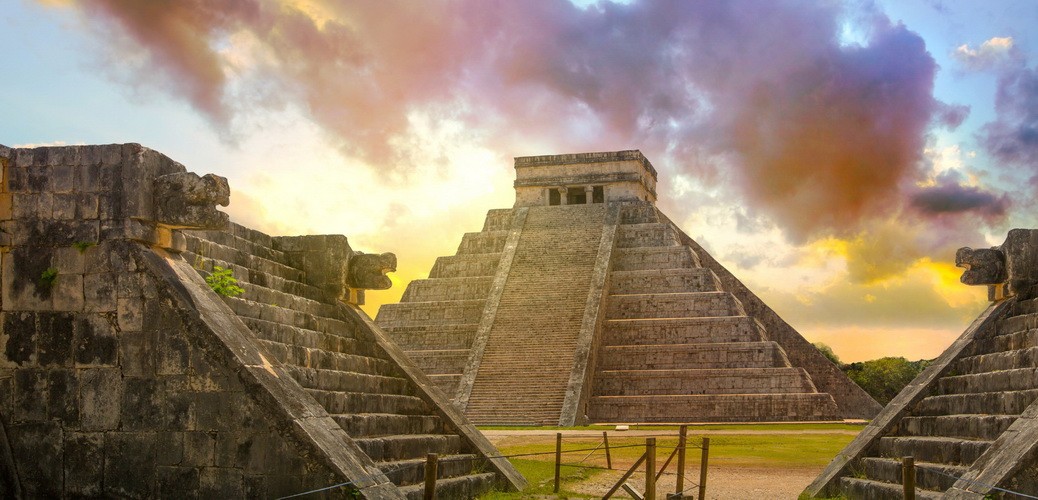
Excursion to Chichen Itza: Temple of Kukulkan
With a height of 30 meters, the pyramid of Kukulkan is relatively small compared to other historical ruins. The Mayan ruin of Tikal, for example, has 47 meters and even the pyramid of Coba is 42 meters high. But its symbolism and architecture make Chichen Itza spectacular. Inside the pyramid of Kukulkan is a smaller but similarly shaped structure. There, in 1935, a figure called Chac Mool was found, and two years later, a red jaguar with eyes made of jade. While the outer temple was dated to the 11th century AD, the interior dates back to the 9th century AD. During a visit to the Mayan ruins of Chichen Itza, you will notice many guides who clap their hands in front of the main building. They want to demonstrate to their visitors the ingenious acoustic construction. Because the clapping produces an echo that is very similar to the sounds of the sacred bird Quetzal. It is assumed that these and other acoustic elements have deliberately flowed into the construction.
Chichen Itza – a true magnet for the crowds

Mayan Ruins Chichen Itza: Travel Guide
A visit to the Mayan ruins of Chichen Itza is on the bucket list of almost every traveler. Accordingly, it can be very full in the archaeological site. If you want to experience the majestic buildings and the interesting history of this place without crowds, you should visit the temple as early as possible. Therefore, we look forward to welcoming you to our private Chichen Itza Tours. We will pick you up from your hotel and go straight to the Mayan ruins of Chichen Itza, striving to be there before the crowds arrive.
Summary
- Chichen Itza has been a UNESCO World Heritage Site since 1988 and one of the seven new wonders of the world since 2007.
- Our private excursion to Chichen Itza starts early in the morning
- The Kukulkan Temple combines various elements of mathematics, astronomy, geometry and acoustics
- On the days of the Equinox, light and shadow cast a snake shape on the pyramid of Chichen Itza
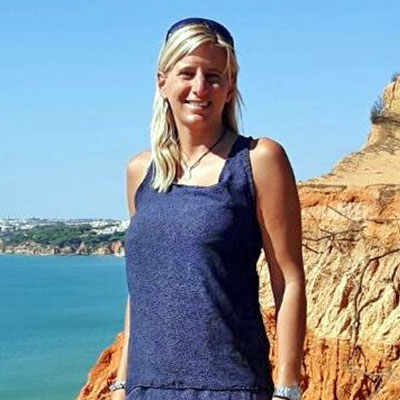
Hello, my name is Birgit and I write about interesting topics around vacations in Mexico and traveling on the Yucatan peninsula. I would love to hear from you and I am always happy to receive ideas and recommendations for new articles.
Enjoy reading!!!
Follow us
Interesting blog posts
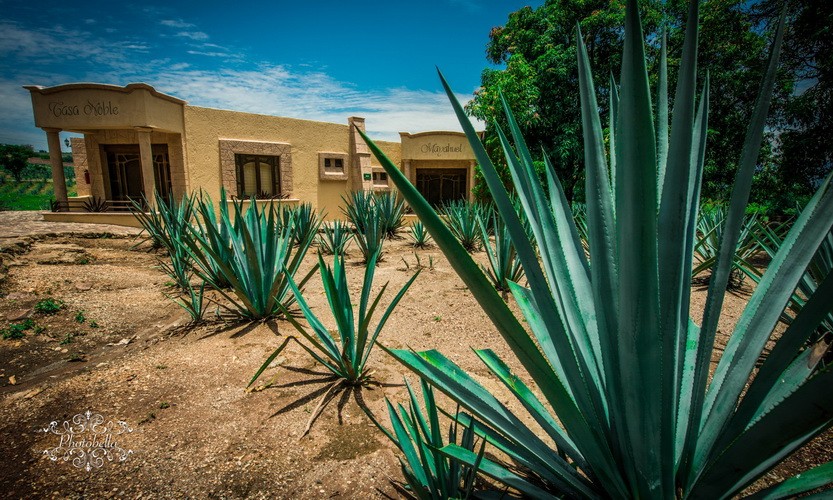
High quality tequila: Recommendations from Mexico
Tequila from Mexico How to recognize High Quality TequilaHigh Quality Tequila: Recommendations from MexicoOne of Mexico’s most popular souvenirs is tequila. It is the most famous form of the Mexican national drink Mezcal and is extracted from the heart of the blue...

Biodegradable sunscreen
Biodegradable Sunscreen Coral ProtectionBiodegradable sunscreen: Coral ProtectionA special consideration for the vacation luggage to Mexico should be the right sunscreen. Because we have to protect our skin against the strong sun and dangerous UV rays. However, the...
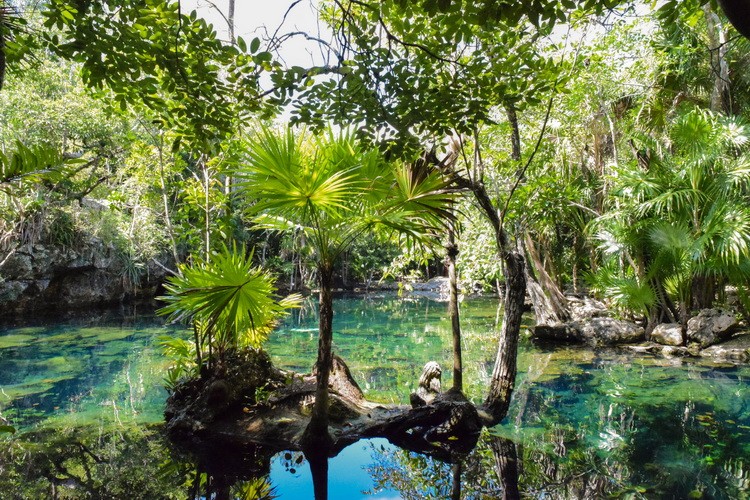
Cenotes in Mexico
Cenotes in Mexico The best Cenotes of the Riviera MayaThe best cenotes in Mexico: Magic OasesLovely, but mystical and full of secrets; the cenotes of the Yucatan Peninsula are a true gift of the nature. Swimming in a cenote, surrounded by jungle and rock formations,...
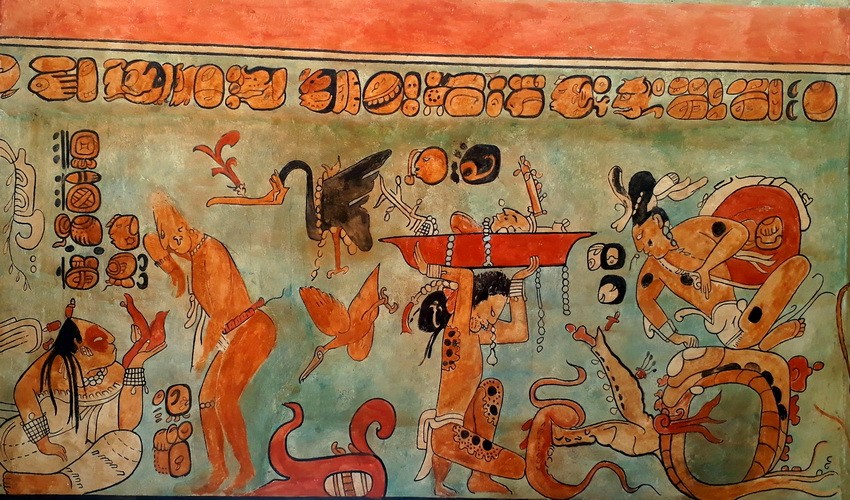
The History of the Maya: An Introduction
History of the Maya Between Myths and Knowledge: An IntroductionHistory of the Maya: An IntroductionThe Maya were excellent mathematicians, architects, astronomers, doctors and very religious people. Their daily life was permeated with rituals and ceremonies. Native...
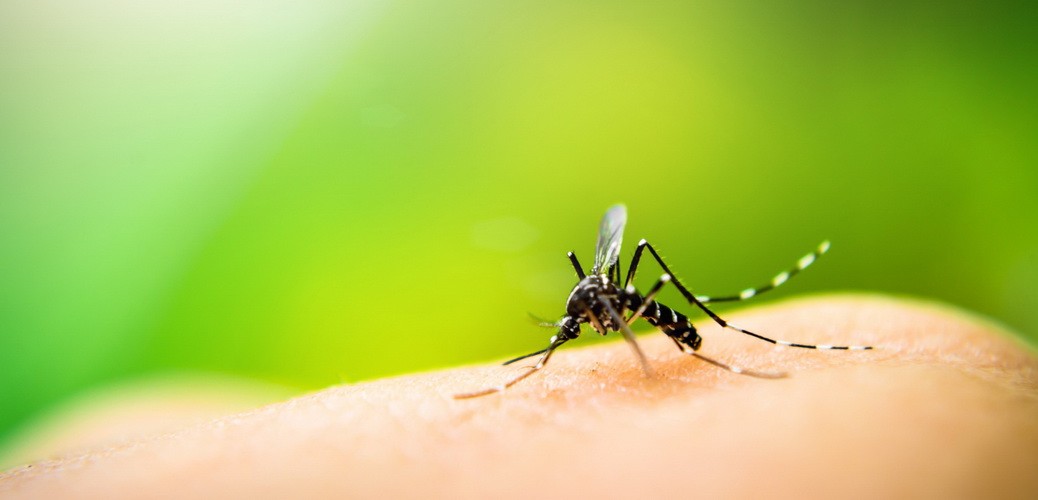
The best mosquito repellent for Mexico
The best mosquito protection For Mexico and the CaribbeanThe best mosquito protection for Mexico and the CaribbeanThe vacation is booked - off to Mexico and the Caribbean. The anticipation of balmy summer nights, tropical rainforests and dream beaches rises!!! If only...
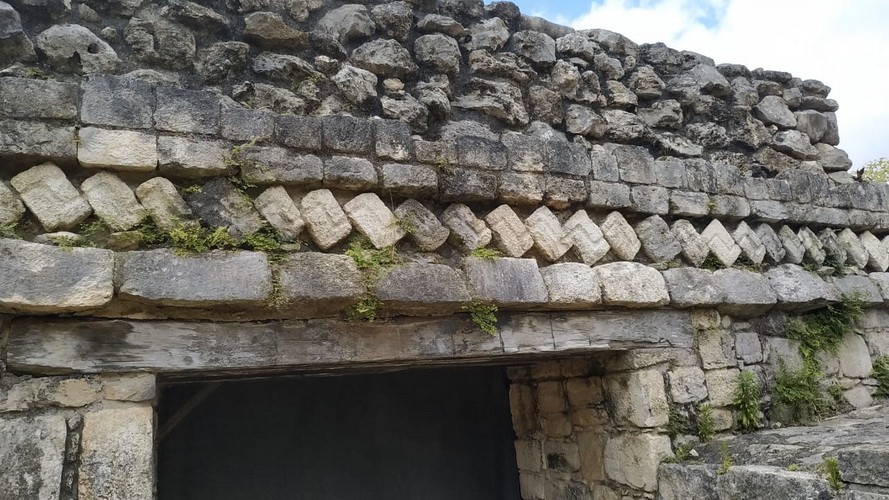
Private Excursions Riviera Maya
Riviera Maya Private Excursions Certified Guides | Personal Support | Pick upPlaya del Carmen: Private Excursions Riviera MayaTreat yourself in a very special way - discover the Riviera Maya with our Riviera Maya private excursions. Our certified tour guides will show...


